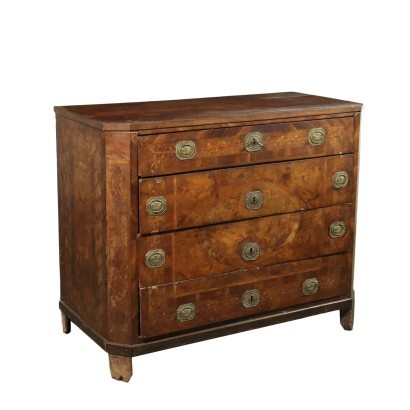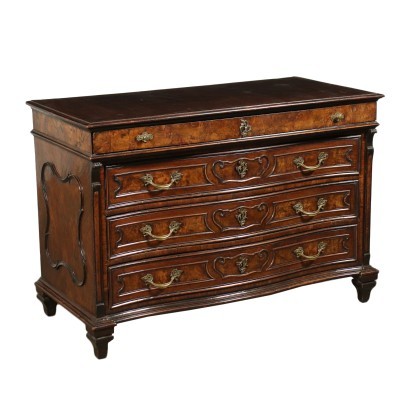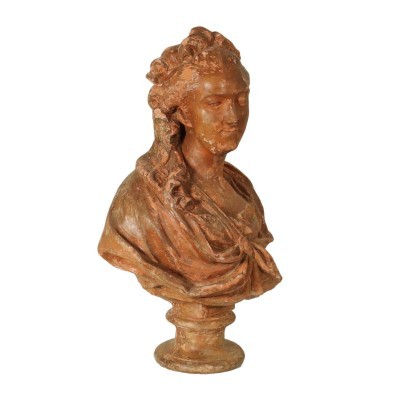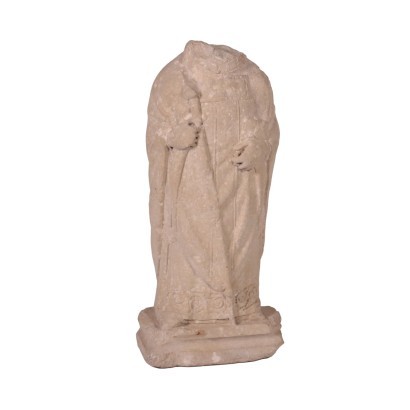Slabbed Walnut Chest of Drawers
Features
Style: Baroque (1630-1730)
Age: 18th Century / 1701 - 1800
Year: Primi '700
Origin: Emilia Romagna, Italy
Material: Walnut Slab , Walnut Burl
Description
An elegant chest of drawers with three drawers, supported by shelf feet. Completely slabbed with walnut burr veneer. Refined handles made of treated bronze and representing a couple of Tritons with a mask in the middle. Poplar interiors, antique locks. Manufactured in Emilia Romagna, Italy, early 18th century.
Product Condition:
The item shows signs of wear due to age. Any damage or loss is displayed as completely as possible in the pictures. It may require restoration and buffing.
Dimensions (cm):
Height: 89
Width: 152
Depth: 72,5
Additional Information
Style: Baroque (1630-1730)
The term derives from the Spanish phoneme barrueco or portuguese barroco and literally means "shapeless pearl".Already around the middle of the eighteenth century in France it was synonymous with unequal, irregular, bizarre, while in Italy the diction was of medieval memory and indicated a figure of the syllogism, an abstraction of thought.
This historical period was identified with the derogatory term of baroque, recognizing in it extravagance and contrast with the criteria of harmony and expressive rigor to which it was intended to return under the influence of Greco-Roman art and the Italian Renaissance.
Baroque, secentista and secentismo were synonymous with bad taste.
As far as furniture is concerned, ideational freedom, the need for pomp and virtuosity originated a synergy destined to produce unsurpassed masterpieces.
The materials deployed were worthy of competing with the most astonishing tales of Marco Polo: lapis lazuli, malachite, amber, ivory, tortoiseshell, gold, silver, steel, precious wood essences and more, dressed the furnishings that by shape and imagination virtually gave life to the a thousand and one nights of many powerful Italians.
Typical of the period were load-bearing or accessory parts resolved with spiral column motifs, clearly inspired by the Berninian canopy of St. Peter, parts with rich sculptural high-relief carving and even in the round within a whirlwind of volutes, cartocci and spirals, curved and broken profiles , copings shaken by gables of articulated shaping, aprons adorned with ornaments, corbels, buttresses and anything else needed to move shapes and structures.
The Baroque is, moreover, the century of illusionism: lacquers and thin tempera flock to furniture and furnishings to imitate with the marbling effects of marble veins or games of precious briars.
Find out more about the Baroque with our insights:
FineArt: Il Barocco
Classic Monday: a double sideboard body, late Venetian Baroque
Classic Monday: a pair of candle holders between Renaissance and Baroque
Classic Monday: a pair of mirrors between Baroque and Barocchetto
Classic Monday: a superb Austrian Baroque console
YouTube - A few bits of furniture history ep1: the Baroque



















